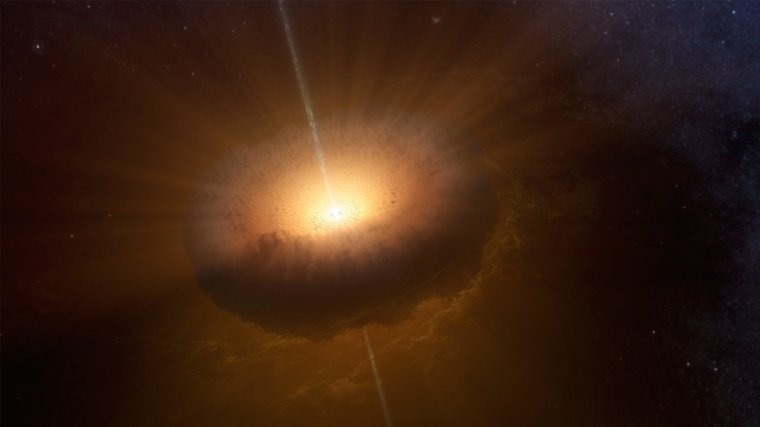| News / Space News |
Loneliest Young Star Seen by Spitzer and WISE
NASA | JULY 30, 2016
The unusual object, called CX330, was first detected as a source of X-ray light in 2009 by NASA's Chandra X-Ray Observatory while it was surveying the bulge in the central region of the Milky Way. Further observations indicated that this object was emitting optical light as well. With only these clues, scientists had no idea what this object was.

An unusual celestial object called CX330 was first detected as a source of X-ray light in 2009. It has been launching "jets" of material into the gas and dust around it. ![]()
Comparing WISE data from 2010 with Spitzer Space Telescope data from 2007, researchers determined that CX330 is likely a young star that had been outbursting for several years. In fact, in that three-year period its brightness had increased by a few hundred times.
The lone star's behavior has similarities to FU Orionis, a young outbursting star that had an initial three-month outburst in 1936-7. But CX330 is more compact, hotter and likely more massive than the FU Orionis-like objects known. The more isolated star launches faster "jets," or outflows of material that slam into the gas and dust around it.
The disk has probably heated to the point where the gas in the disk has become ionized, leading to a rapid increase in how fast the material falls onto the star.
Most puzzling to astronomers, FU Orionis and the rare objects like it -- there are only about 10 of them -- are located in star-forming regions. Young stars usually form and feed from their surrounding gas and dust-rich regions in star-forming clouds. By contrast, the region of star formation closest to CX330 is over a thousand light-years away.
In fact, it is possible that all stars go through this dramatic stage of development in their youth, but that the outbursts are too short in cosmological time for humans to observe many of them.
How did CX330 become so isolated? One idea is that it may have been born in a star-forming region, but was ejected into its present lonely pocket of the galaxy. But this is unlikely, astronomers say. Because CX330 is in a youthful phase of its development -- likely less than 1 million years old -- and is still eating its surrounding disk, it must have formed near its present location in the sky.
YOU MAY ALSO LIKE



